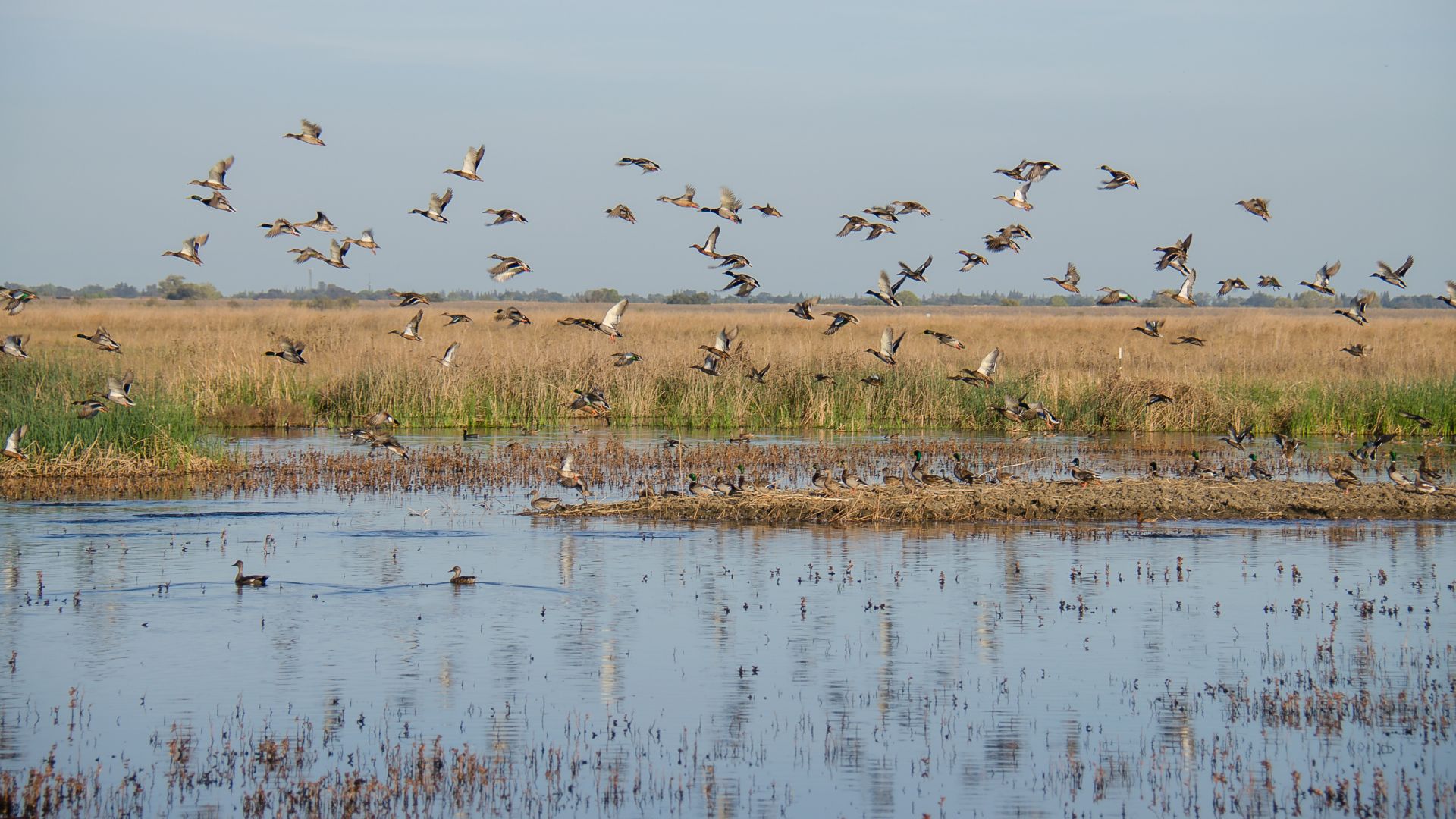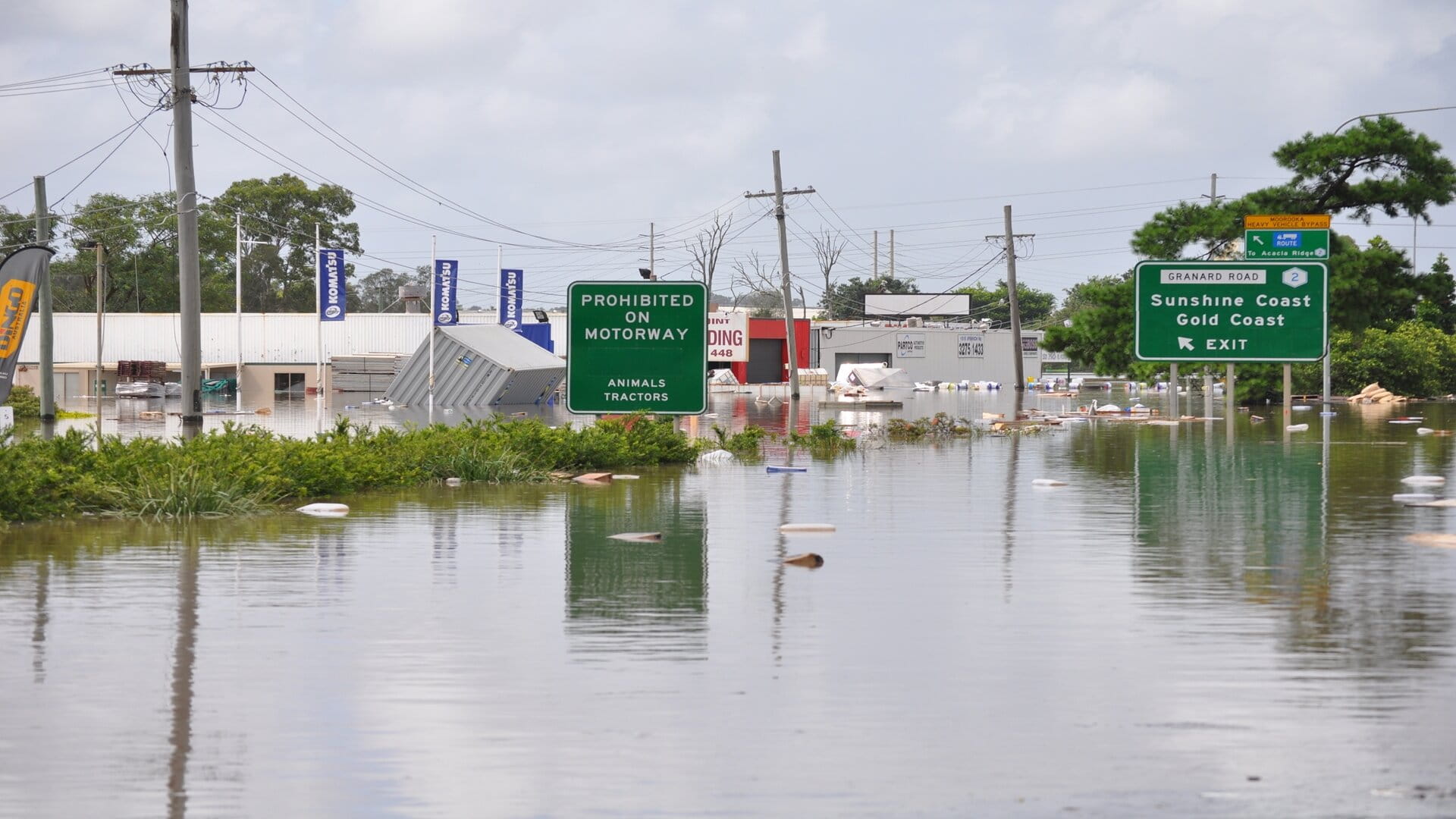Holding back the tide: a human-nature partnership against coastal erosion
Sitting on the edge of the UK’s Norfolk coastline, you would be forgiven for missing Bacton Gas Terminal on a map. Adjoined only by two small coastal villages, Bacton and Walcott, it is an unassuming location, and yet it is here that a third of the UK’s gas supply is handled and maintained by operators Shell and Perenco (Bacton Gas Companies).
In December 2013, weather reports indicated that Cyclone Xaver, which had been sweeping across Europe, was over the North Sea, churning up waves, registering 100mph+ winds and creating a storm surge – and it was heading towards the UK.
Storms were not new in this part of the world – in fact, the village of Walcott boasts the only portion of Norfolk’s coastal road that runs along the edge of the sea, making it a popular spot for storm watchers – but after years of storm weather and coastal erosion, the terminal operators had cause to be anxious.
When the surge arrived, Norfolk was hit by the worst floods it had seen since 1953; thousands of homes were flooded, a lifeboat station was swept away, and local wildlife suffered major habitat loss....
The aftermath
For the Bacton Gas Companies, they awoke to find the gap between their site and the sea had shrunk to just ten metres in critical places. Ten metres of land had disappeared in one night. When the terminal was built in the 1960s it sat 100 metres from the coast.This stretch of coastline wasn’t without defences – over the years concrete sea walls had been erected in front of the villages, and a strong wooden structure had been constructed in front of the terminal, to protect against storms. And certainly, the damage would have been even greater without them.
But when Norman Lamb, then Member of Parliament (MP) for North Norfolk, visited Walcott in the days following the storm – it was clear that the current solutions would not withstand another surge of this kind. “It’s a bit like a war zone…” he said: “it’s pretty devastating for everyone involved.”
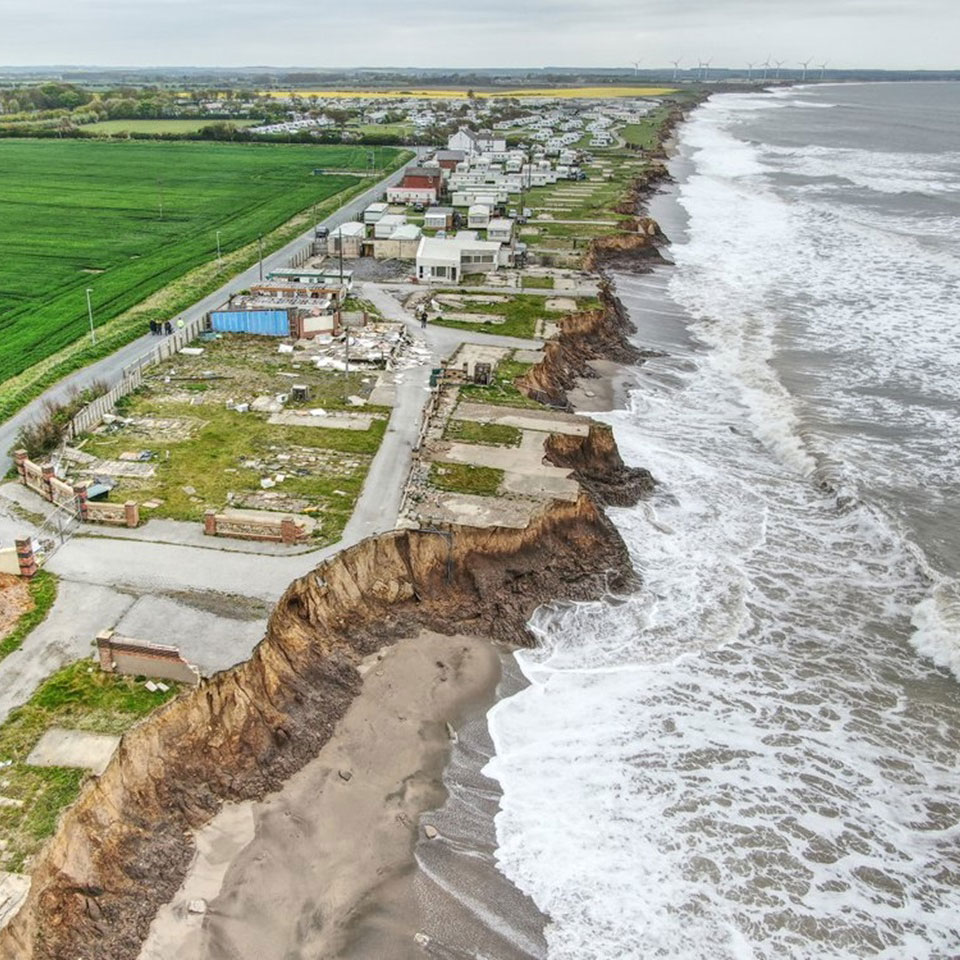
A deepening crisis with no clear solution
Replacing the concrete sea walls, that had defined the region’s approach to coastal erosion to date, was no longer feasible – in fact it would make the situation worse by forcing the impacts of stormy weather down the coast to the neighbouring Bacton and Walcott. That prospect was not something the terminal operators were willing to entertain.
Along the coast, the local government, North Norfolk District Council (NNDC), faced the likelihood of having to relocate their two communities at Bacton and Walcott within the next ten years. The council’s Shoreline Management Plan for the area concluded that no solution could be found to protect homes in the long term.
The crisis unfolding seemed unsolvable, and so the Bacton Gas Companies and NNDC each set out in search of specialist expertise to help chart a route out of the dark. Though they set out separately, they set in motion a process that would bring them and the community together and revolutionise the coastal management approach in the UK.
Sandscaping, an engineering art form
Enter Jaap Flikweert and his team. Jaap is a leading flood and coastal management advisor for the UK with Royal HaskoningDHV. His knowledge and expertise have made him a regular media spokesperson on the impact of major flood events in the UK – where he has seen first-hand the devastating impact of storm surges.
Working within Royal HaskoningDHV, a global engineering consultancy driven by a promise to enhance society through sustainable and innovative solutions, Jaap and his colleagues have opportunities to be at the forefront of new innovations in engineering, often collaborating across nations to pioneer new approaches to age old issues.
In this case, the issue was coastal erosion, and the solution had been forged by the Dutch National Innovation Platform on the South Holland coast; in a project supported by Royal HaskoningDHV’s expertise. There, they called it the Zandmotor or ‘sand engine’ – here in the UK we call it sandscaping.
It sounds like an art form – and there is beauty in its design. In simple terms, sandscaping uses dredging vessels to extract millions of cubic metres of sand (to get an understanding of how much that is, imagine your favourite stadium – now fill it with sand) from designated sites on the seabed, belonging to The Crown Estate, before placing it on the coast and using the energy of the sea to distribute it over time; thus bolstering the natural coastline without leaving a mark.
A rising tide lifts all boats
For The Crown Estate, the organisation responsible for land owned by the British monarchy, the potential of sandscaping was exciting. In England, about half of all coastlines below a certain water level are owned by The Crown Estate and often leased to councils. With several other sites around the UK facing the impacts of erosion, sandscaping represented a potential solution that used the asset they owned (sand and beaches) to protect the stakeholders who called their coastlines home – and so, they became a key partner; co-funding the efforts to bring the solution to the UK.
By the time the Bacton Gas Companies, spurred by the events of 2013, contacted Jaap, having worked with Royal HaskoningDHV on other projects over the years, Jaap’s team had completed studies to show sandscaping might work in the UK. For NNDC, as a coastal council, they had also held formative discussions with Royal HaskoningDHV about different solutions in the past – but the road for them was more difficult – with funding any solution to protect their communities seemingly impossible within the limitations of their budget. As both parties explored their options, their paths began to cross – and it appeared that perhaps there was a solution to be found together.
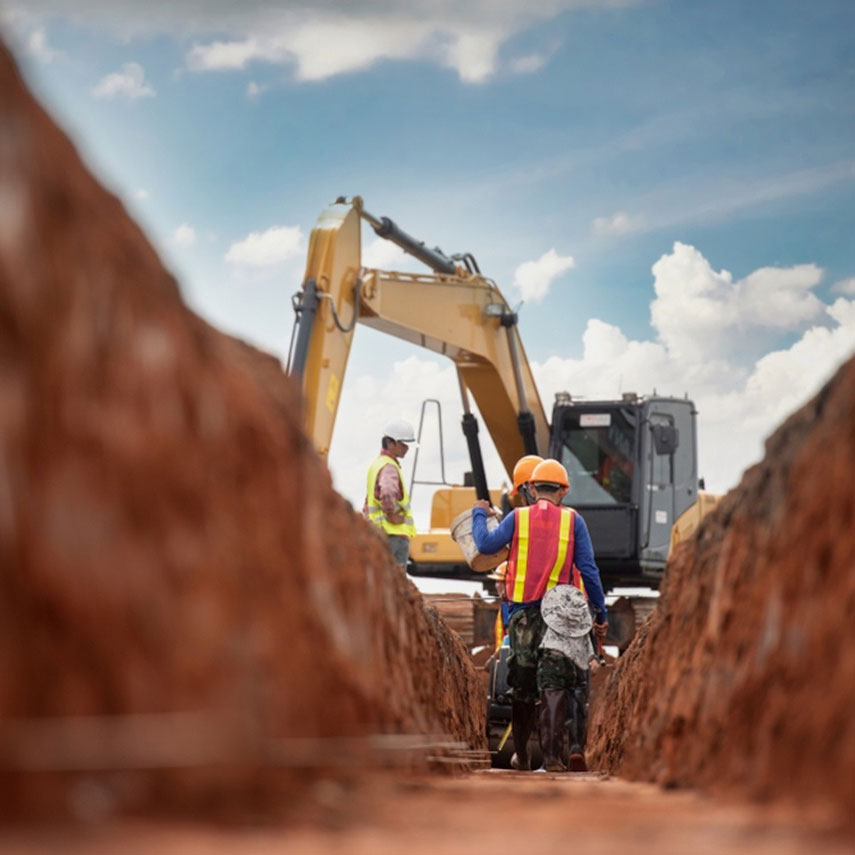
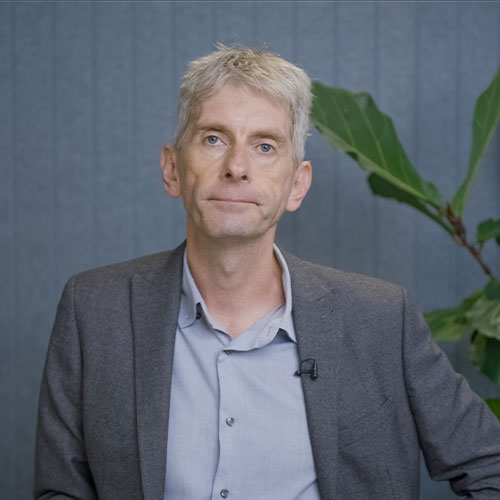
We had invested alongside partners like The Crown Estate in exploring the potential to develop the sandscaping approach for the UK. And we’d had lots of conversations with the key organisations and stakeholders required to make it happen in a UK context – including Natural England, the Environment Agency, who were all interested in the potential of this approach.
Forming a united partnership, guided by expertise
When the Bacton Gas Companies came calling, what began as a potential crisis suddenly became a golden opportunity. “Through our exploration of sandscaping in the UK, we knew that all of the right stakeholders were looking at solving the issue of coastal erosion independently,” Jaap continues, “but when the Bacton Gas Companies reached out, we were provided with an opportunity to bring these interested parties together to implement sandscaping in a way that could prove its feasibility in the UK and open up the doors to a new future of flood mitigation and coastal management.”
What Jaap and his team quickly realised was that their sandscaping solution could not only protect the Bacton Gas Terminal but, if they worked together, the coastal communities at Bacton and Walcott too. Sandscaping could also restore the beachfront that had fallen away, giving the community a slice of their history back, as well as important business and economic boosts by avoiding erosion and boosting tourism.
For the Bacton Gas Companies there was the chance to protect their crucial infrastructure – and for NNDC, they had a co-funder who could make a solution possible. So, a unique public/private partnership began – along with The Crown Estate and Environment Agency.
“You could say that we turned out to be the invisible piece of string that tied all of these various stakeholders together – and in the process we facilitated a larger, very special partnership between the public and private sector. The kind of partnership that is needed to confront major issues such as coastal erosion.”
A terminal protected and a community spirit reignited
When the proposal for using sandscaping was put to the residents of Bacton and Walcott at consultation events, the response was emphatic: ‘Make it happen!’ read the notes left behind at the consultation: ‘Brilliant!’, ‘Hope that it happens soon’, ‘Go for it!’. The community even set up a JustGiving page that raised enough money to cover 100m3 of sand; giving them a small but poignant investment in this unique project."Throughout the process of exploring sandscaping as a solution, we talked the Bacton Gas Companies and NNDC through the uncertainties involved – it is always a factor when you’re pioneering an entirely new way of doing things,” Jaap concludes. "But once we’d carried out the necessary feasibility studies and understood that it was possible, and once we’d received the whole-hearted support of the local community – the entire project team felt driven to see this concept realised.”
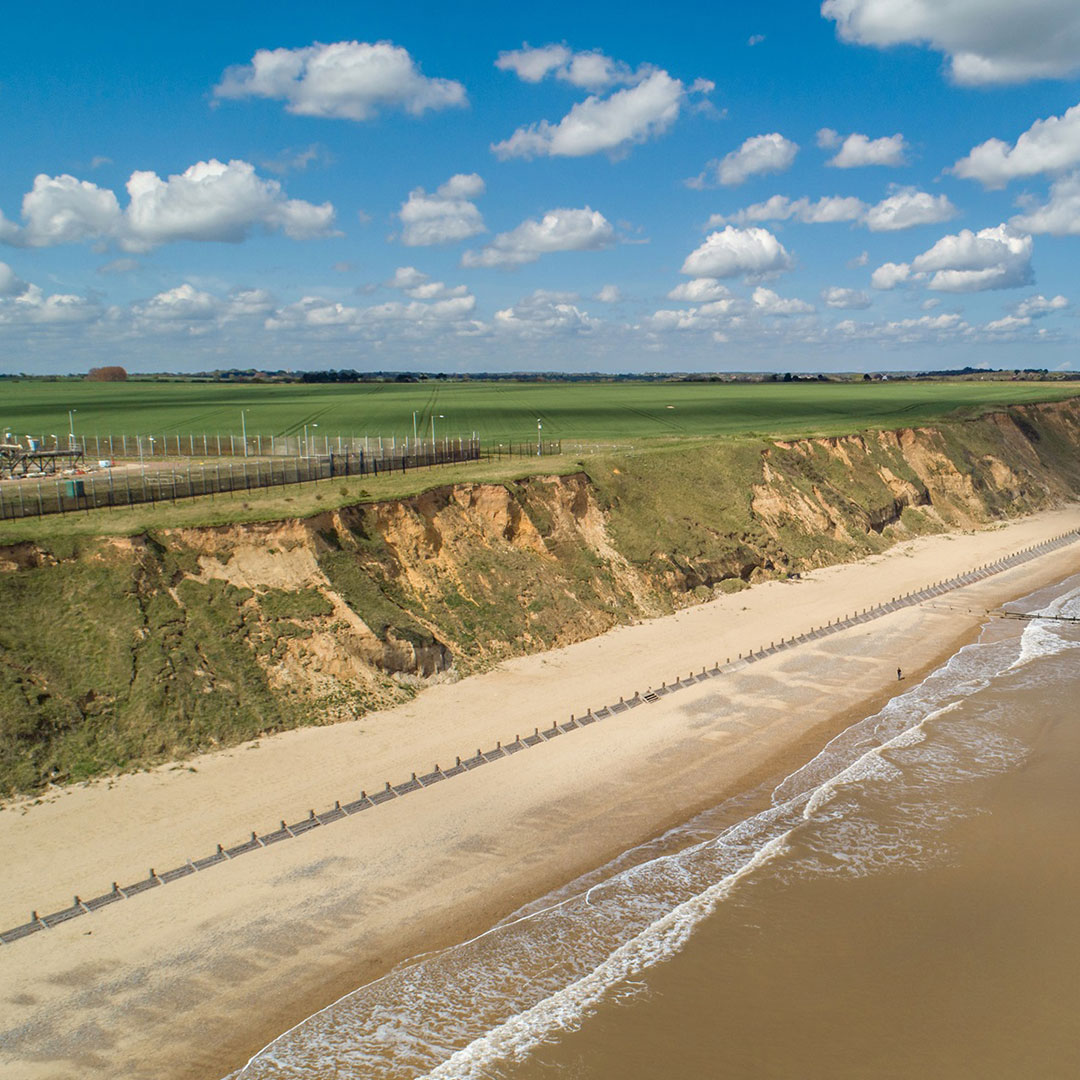
So, in 2019 on the stretch of Norfolk coastline – which had been devastated six years earlier – HAM 318, the long flat dredging vessel of contractors Team Van Oord, settled offshore and within six weeks had raised a 6km long beach from the sea. On the shore itself lay lines of pipes, funnelling the sand onto the beach, along with a cavalry of diggers, using GPS to shift it into place.
Today, following its completion in late 2019, the beach stands as an example of what can be achieved when stakeholders work in the interest of each other and their community. The Bacton Gas Terminal stands protected for a further 15-20 years – with close monitoring of the beach’s changing profile over time informing a potential renewal of the process at the end of that period.
And for the local seaside community – rather than having to relocate, losing a piece of themselves and their history – they have regained their beach, for years to come.
By shifting perspectives, we enhance society together.
Project facts
- ClientNorth Norfolk District Council and the Bacton Terminal Companies
- LocationBacton, Norfolk, United Kingdom
- Date2013 - 2018
- ChallengeRoyal HaskoningDHV has been tasked with designing coastal protection for the nationally important Bacton Gas Terminal.
- SolutionTaking inspiration from the Dutch, a sandscaping solution has been designed. This sustainable solution uses the power of the sea to naturally shift large quantities of sand down a coastline providing flood and coastal protection to critical infrastructure and also to neighbouring communities - thus building with nature.
Discover more trends & solutions
Discover more Shifting Perspectives Stories
Explore all our project stories where we shift perspectives to enhance society together.
Are you ready to work on projects that drive positive change?
We are always looking for talents who want to collaborate closely with colleagues, clients and stakeholders and offer a new perspective to illustrate the bigger societal and technological picture. Talents who uses their deep domain knowledge to shape innovative solutions to make the transition to smart and sustainable possible. All the while considering the ethical implications of these solutions, to ensure we are driving positive change at every level: globally and locally, for our today and our tomorrow.


